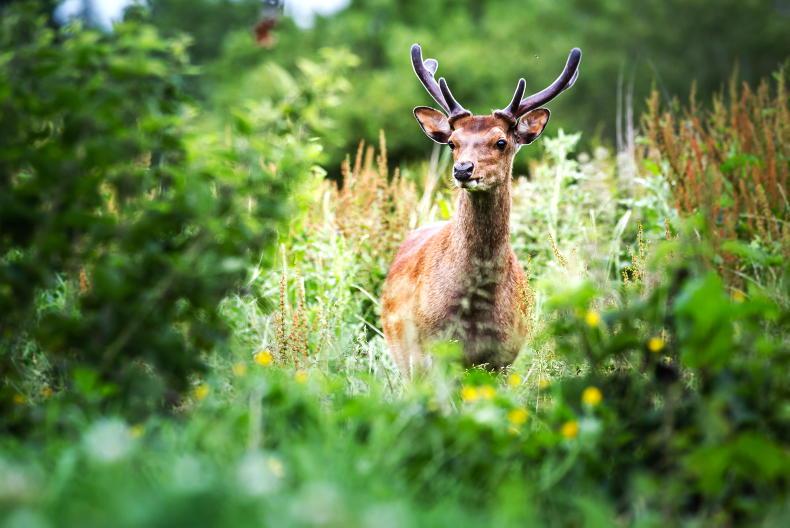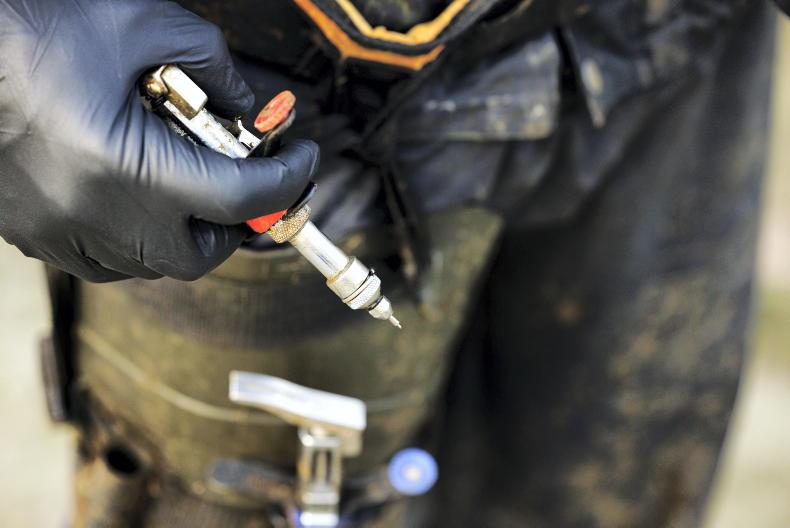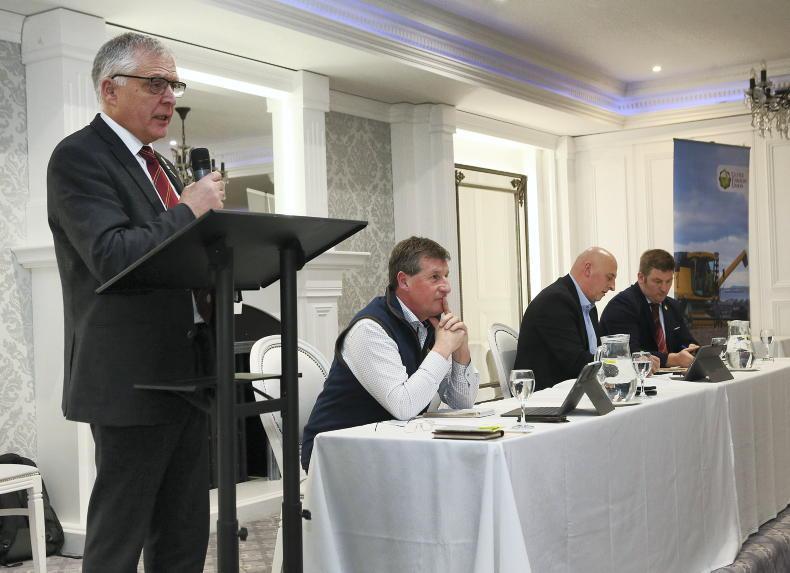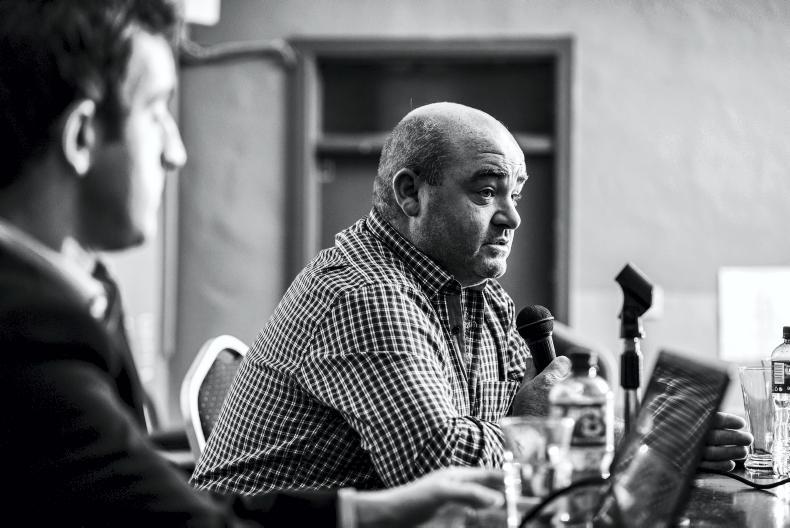Satellite imagery, culling records and disease spread modelling have helped a team of UCD researchers build a picture of how Ireland’s deer population has grown since 2000.
The SmartDeer study has found that the country’s deer population is expanding and spreading into new areas, according to researcher Kilian Murphy.
The study’s results show that the expansion and population growth is happening in all of Ireland’s three main deer species – red, fallow and sika deer.
Much of the new territory entered by the deer species was linked to high-density population centres of deer.
These existed in the northwest for red deer, the southwest and the east for sika and the midlands for fallow deer.
“We were testing a new methodology that had not been used in ecology and we did produce quantitative maps on deer populations in Ireland from 2000 to 2018,” Murphy told the Irish Farmers Journal.
“We managed to get a scientific baseline that can be used to answer some of these population management questions.
“There are a lot of stakeholders interested in deer management but they diverge on whether a deer is a pest – maybe like some farmers – or a hunter ?who will see deer as a prize. This research can steer these people to make their decision on deer management and active deer management while being properly informed,” Murphy said.
However, ?the maps cannot put a reliable estimate on deer populations in individual areas and the figures provided by some data sources may not be entirely accurate.
An example Murphy cited was where hunters may under-report the number of deer they cull.
Sika were introduced to Powerscourt Estate in Co Wicklow in 1859 but have expanded outwards since.
Changing habitats
Changes in each deer species’ preferred habitats were found over the study, which looked at data from 2000 to 2018.
Red deer were noted to have shifted from natural grasslands to improved ones, while fallow deer were seen to be relying less on pasture and peat and more on planted vegetation and artificial surfaces.
Sika deer had more of a reliance on conifer forestry, heathland and planted vegetation. The importance of peat bogs on the sika was observed to have lessened over the years.
“It is hard to infer exactly what is driving these changes in particular areas but land use will play a big role. It could be the lack of large predators, a fast-growing forestry sector and even an increase in cereal production,” the researcher continued. There are European studies to back this is up but there’s more work to be done in Ireland. More work has to be done.”
Hotspots
Murphy’s work has produced a series of maps, tracking the expansion of deer around the country.
These maps suggest that deer population “hotspots” exist around historic sites where deer had been introduced for hunting and recreational purposes.
One example would be the area around Powerscourt Estate in Co Wicklow, where sika deer were introduced in the 1800s. Co Wicklow was shown to have a large sika deer population in 2018. We see low density proliferation from the original introduction sites, deer are spreading into new territory,” said Murphy.
“They would have been introduced for the purposes of hunting but they spread.”
It was stated by the researchers that there may have been local introductions of non-native deer species into the past 100 years which were not documented but which added to deer population growth in some areas.
The Deer Management Strategy Group is gathering views on deer management in Ireland, the impact of increased deer numbers on issues such as forestry, biodiversity, road safety, animal health and welfare and the welfare of the deer themselves. You can share your views by completing the survey here before 5pm, Friday, 10 February 2023.
Satellite imagery, culling records and disease spread modelling have helped a team of UCD researchers build a picture of how Ireland’s deer population has grown since 2000.
The SmartDeer study has found that the country’s deer population is expanding and spreading into new areas, according to researcher Kilian Murphy.
The study’s results show that the expansion and population growth is happening in all of Ireland’s three main deer species – red, fallow and sika deer.
Much of the new territory entered by the deer species was linked to high-density population centres of deer.
These existed in the northwest for red deer, the southwest and the east for sika and the midlands for fallow deer.
“We were testing a new methodology that had not been used in ecology and we did produce quantitative maps on deer populations in Ireland from 2000 to 2018,” Murphy told the Irish Farmers Journal.
“We managed to get a scientific baseline that can be used to answer some of these population management questions.
“There are a lot of stakeholders interested in deer management but they diverge on whether a deer is a pest – maybe like some farmers – or a hunter ?who will see deer as a prize. This research can steer these people to make their decision on deer management and active deer management while being properly informed,” Murphy said.
However, ?the maps cannot put a reliable estimate on deer populations in individual areas and the figures provided by some data sources may not be entirely accurate.
An example Murphy cited was where hunters may under-report the number of deer they cull.
Sika were introduced to Powerscourt Estate in Co Wicklow in 1859 but have expanded outwards since.
Changing habitats
Changes in each deer species’ preferred habitats were found over the study, which looked at data from 2000 to 2018.
Red deer were noted to have shifted from natural grasslands to improved ones, while fallow deer were seen to be relying less on pasture and peat and more on planted vegetation and artificial surfaces.
Sika deer had more of a reliance on conifer forestry, heathland and planted vegetation. The importance of peat bogs on the sika was observed to have lessened over the years.
“It is hard to infer exactly what is driving these changes in particular areas but land use will play a big role. It could be the lack of large predators, a fast-growing forestry sector and even an increase in cereal production,” the researcher continued. There are European studies to back this is up but there’s more work to be done in Ireland. More work has to be done.”
Hotspots
Murphy’s work has produced a series of maps, tracking the expansion of deer around the country.
These maps suggest that deer population “hotspots” exist around historic sites where deer had been introduced for hunting and recreational purposes.
One example would be the area around Powerscourt Estate in Co Wicklow, where sika deer were introduced in the 1800s. Co Wicklow was shown to have a large sika deer population in 2018. We see low density proliferation from the original introduction sites, deer are spreading into new territory,” said Murphy.
“They would have been introduced for the purposes of hunting but they spread.”
It was stated by the researchers that there may have been local introductions of non-native deer species into the past 100 years which were not documented but which added to deer population growth in some areas.
The Deer Management Strategy Group is gathering views on deer management in Ireland, the impact of increased deer numbers on issues such as forestry, biodiversity, road safety, animal health and welfare and the welfare of the deer themselves. You can share your views by completing the survey here before 5pm, Friday, 10 February 2023.










SHARING OPTIONS